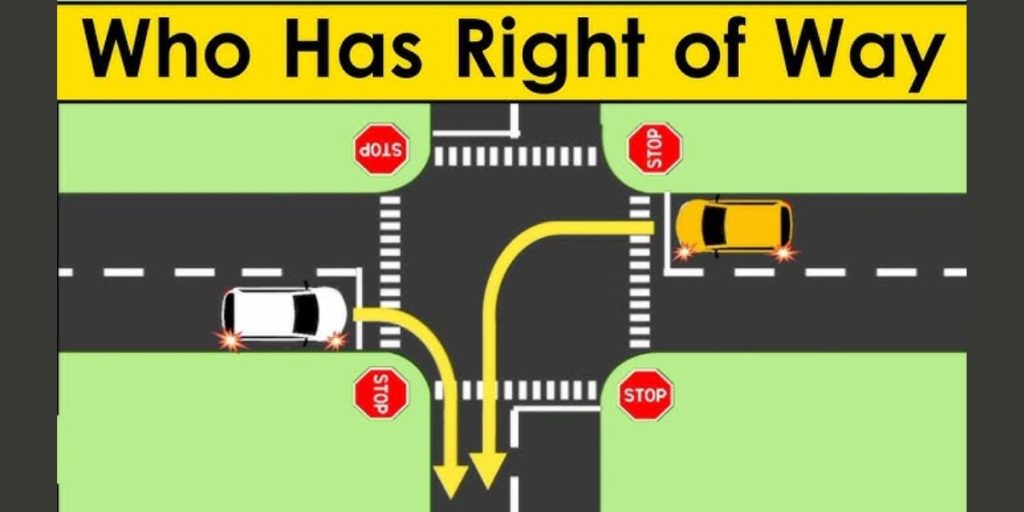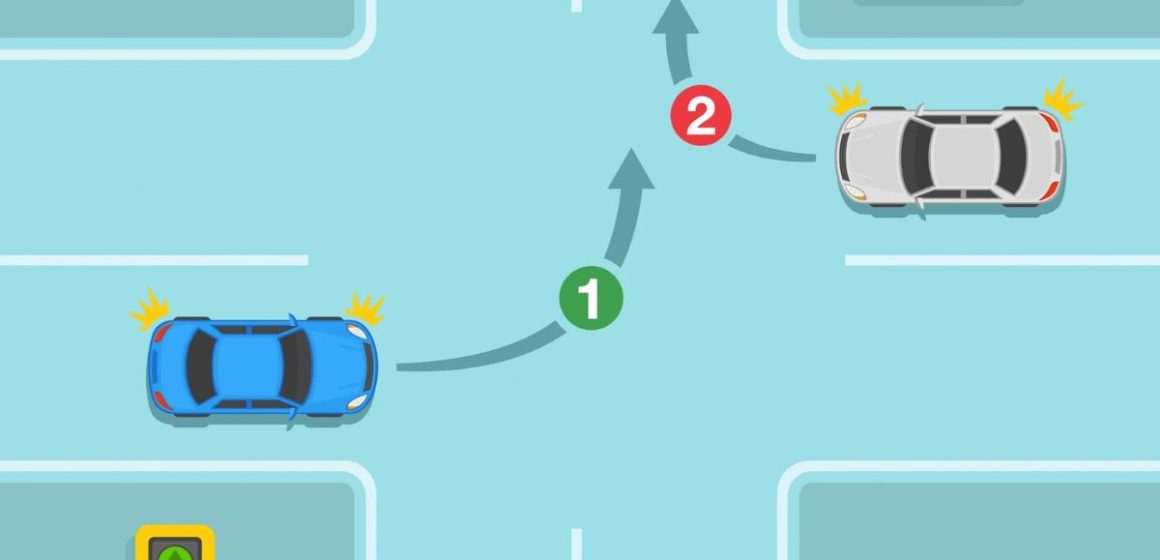INDIANAPOLIS, Indi. (DDN) – Right-of-way laws are critical to know and comprehend. The driver who breaches them is likely to be held accountable in the event of a crash. Here’s what cars, pedestrians, and cyclists should know about Indiana’s right-of-way legislation. There are various types of crossings, and each has its own set of laws about who has the right of way.
Controlled Intersections
A controlled intersection is one with an automatic traffic light.
- Vehicles with green lights or green arrows have the right of way, while those with red lights must come to a complete stop.
- If a driver making a right turn encounters a red light, he or she must also come to a complete stop before performing the right turn when the road is clear.
- At a controlled intersection, drivers who make a left turn when the light is green must yield to oncoming traffic. The same is true for drivers making a U-turn, but they must also yield to those making a right turn.
Uncontrolled intersections
An uncontrolled intersection is one with either a four-way or two-way stop sign.
- When there is a four-way stop sign, all automobiles approaching it must come to a complete stop. If more than one driver approaches a stop sign at the same moment, the driver on the right has the right of way. He or she may continue after coming to a complete halt.
- If the crossroads is between a main road and a side street, there will most likely be a two-way stop sign on the side street. traffic with stop signs must come to a complete stop and wait for traffic on the main route to pass through, as they have the right of way. When the road is clear, drivers turning into or crossing the main road may proceed.
Three-way Intersections
A three-way junction creates a “T” shape. Typically, this occurs when one route comes to an end and intersects with another. These intersections may feature a stop sign, a yield sign, a flashing red light, or a flashing yellow light. Each has its own meaning.
- If there is a yield sign at the end of the road, the approaching car must surrender to the incoming traffic. Once the road is clear, he or she may move cautiously. A flashing yellow light indicates the same thing.
- A stop sign or a flashing red light requires the oncoming car to come to a complete stop, confirm the road is free, and then proceed.

Right-of-Way laws at Roundabouts
Roundabouts, often known as traffic circles, are formally defined as intersections.
- The distinction is that traffic moves in a counterclockwise circular direction with no stop signs. Instead, yield signs are posted at each roundabout entry point.
- The vehicles on the roundabout have the right of way, thus those seeking to enter the traffic circle must yield.
What Are the Pedestrian and Cyclist Right of Way Laws?
Pedestrians and bikers typically have the right of way when sharing the road.
- Drivers at an intersection must yield to pedestrians in the crosswalk. This means that a car making a right, left, or U-turn at a junction must wait for the crosswalk to clear before proceeding with the turn.
- Pedestrians do not have the right of way at a controlled crossing with a “do not cross” sign. Pedestrians outside a crosswalk do not have the right of way. They have to yield to incoming traffic. In Indiana, crossing the street outside of an authorized crosswalk is considered jaywalking and is punishable by a fine.
- Cyclists must follow the laws of controlled and uncontrolled junctions as well. They may not proceed when a traffic light is red, unless they are performing a right turn. However, like a vehicle, the bicycle must come to a complete stop and wait for the road to be clear. Cyclists must likewise follow the regulations outlined for drivers.
Conclusion
If a driver fails to cede the right of way to others and causes a collision, he or she will most likely be held accountable. If a pedestrian or cyclist fails to cede the right-of-way, they will most likely only be partially liable for the damages. This is because vehicles are expected to use more caution while engaging with pedestrians and bikers. However, in other cases, a pedestrian or cyclist may be totally at fault for an accident. Every case is unique, so consult with an experienced attorney.



Leave a Reply